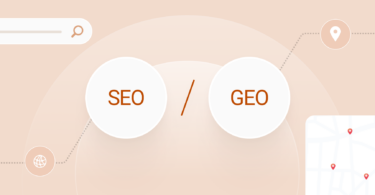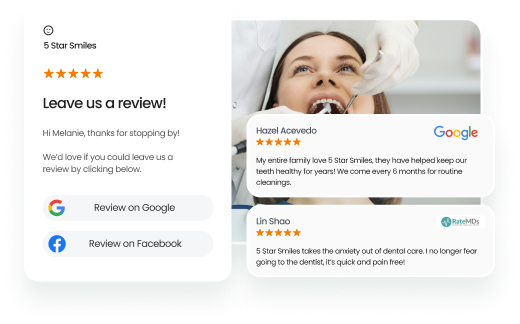Customer success vs customer experience might seem like two sides of the same coin. After all, both aim to keep customers satisfied, engaged, and loyal, right? But dig deeper, and a critical distinction emerges that can make or break your growth strategy in 2025.
One aims to ensure that customers achieve their desired outcomes through your product or service. The other zooms out to optimize the entire customer journey across multiple channels, from first touch to post-purchase support.
When businesses blur the line between the two, it often leads to disjointed teams, missed KPIs, and lost opportunities. Businesses that clearly distinguish customer experience vs customer success can drive measurable gains in customer retention, lifetime value, and brand advocacy.
In this blog, we’ll explore the key differences, goals, metrics, team responsibilities, and how they work together more effectively. Additionally, we’ll demonstrate how Birdeye’s AI-powered tools can unify these two approaches to deliver better outcomes, using real-world results from the Birdeye and Complete Care success study.
CS = Enablement. CX = Emotion.
While customer success ensures customers achieve outcomes, customer experience ensures they feel good while doing so. In 2025, aligning both is essential for business growth and customer loyalty.
Table of contents
- What is the difference between customer success and customer experience?
- Defining customer success vs customer experience in detail
- Why the distinction matters: Impact on growth, retention, and revenue
- Key metrics for customer success vs customer experience
- How Birdeye bridges customer success and experience
- How Complete Care increased patient acquisition by 3653% with Birdeye
- How customer success and experience teams work better together
- Why value is the metric that matters most
- How to align customer success and customer experience using data
- The future of success and experience: AI, benchmarks, and customer-centricity
- FAQs: Customer success vs customer experience
- Final thoughts: The difference between customer success and experience is your competitive edge
What is the difference between customer success and customer experience?
At a glance:
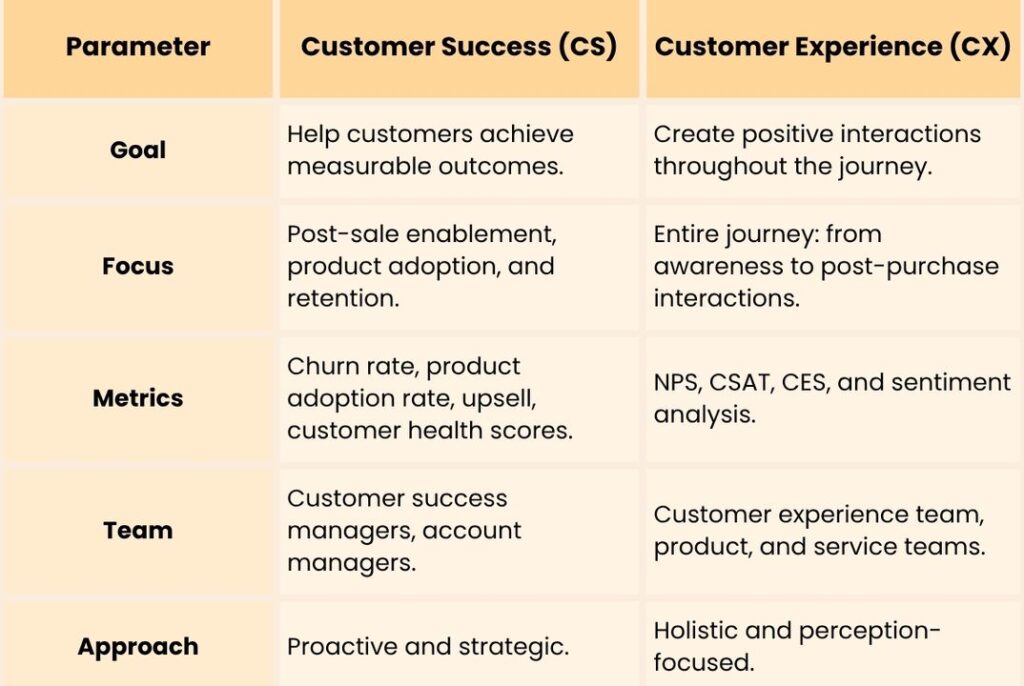
Let’s break these down further.
Defining customer success vs customer experience in detail
Understanding the difference between customer success and customer experience starts with clear definitions. While they share similar goals, their focus, execution, and outcomes differ distinctly. Here’s a closer look at what truly sets them apart.
What is customer success?
Customer success is a proactive approach that ensures both new and existing customers achieve their desired outcomes while using your product or service. Unlike traditional support, which reacts to problems, customer success works across the entire relationship to unlock value, deepen engagement, and fuel long-term satisfaction.
At its core, customer success focuses on guiding customers toward positive outcomes that align with their goals. It involves working closely with the product team to improve usability, educating customers on key features, and building relationships that lead to lasting loyalty and revenue growth.
Core goals of customer success:
- Accelerate product adoption through structured onboarding, training, and personalized engagement for new customers.
- Prevent churn by identifying risks early, such as declining usage or unresolved feedback, using health scores and behavioral data.
- Drive expansion by identifying and capitalizing on upsell and renewal opportunities through ongoing relationship management.
- Create brand advocates by helping customers experience consistent value throughout their entire customer journey and turning satisfied users into vocal promoters.
Pro Tip: In the customer success vs customer experience debate, remember this: CS (customer success) isn’t about solving one-off issues. It’s about long-term enablement, guiding every customer toward a goal from the very beginning.
What is customer experience?
Customer experience (CX) is the sum of every interaction a customer has with your brand from the first impression in a marketing ad to conversations with customer service teams, all the way through onboarding, product use, and even billing. It’s not about isolated touchpoints; it’s about the holistic perception of your brand across the entire customer journey.
Unlike a customer success program, which ensures outcome achievement, customer experience focuses on how those outcomes feel. Are your customers enjoying the process? Do they feel understood, valued, and supported at every stage?
When businesses get this right, the rewards are clear: smoother journeys, more satisfied users, stronger emotional connections, and ultimately, increased customer lifetime value. It’s a measurable force behind business success, not simply a surface-level indicator.
Core goals of customer experience:
- Deliver seamless multi-channel journeys to create a frictionless path across marketing, product, support, and retention.
- Foster positive emotional responses by leaving customers feeling heard, respected, and confident in their choice.
- Ensure satisfaction across segments by tailoring experiences to meet the diverse needs and usage patterns of different customers.
- Improve key metrics, such as NPS and CES, to track emotional loyalty, ease of interaction, and brand affinity.
Worth Noting: A single moment of friction, such as a delayed response from customer service teams or a confusing billing issue, can undo months of goodwill. Even the best product can’t compensate for a poor experience, which keeps the focus on the importance of CX.
Why the distinction matters: Impact on growth, retention, and revenue
By recognizing how customer success and customer experience contribute to the overall journey, you can optimize processes, improve value realization, and drive long-term success.
Here’s how the distinction influences key business metrics:

Now, let’s take a closer look at each individual point, examining how customer success and customer experience contribute to overall business growth.
1. Customer growth
Customer success teams focus on ensuring that customers continually expand their usage over time. Proactive strategic account management empowers customers to achieve maximum product value through deeper engagement and adoption.
On the other hand, customer experience teams drive growth by creating a smooth onboarding process and eliminating friction throughout the journey. They ensure seamless interactions that encourage deeper product usage and long-term engagement.
2. Customer retention
Customer success teams are equipped with an early warning system to detect signs of churn early, such as changes in customer behavior or a decline in usage. By leveraging customer health scores and behavioral triggers, they proactively address issues that could lead to dissatisfaction, thereby maintaining high retention rates.
CX teams enhance retention by fine-tuning every interaction to ensure satisfaction. They focus on optimizing the customer’s likelihood to remain loyal, ensuring the experience is consistent and positive across all digital touchpoints. When both teams align, businesses can establish a strong and loyal customer base.
3. Customer loyalty
The sweet spot where customer success and customer experience converge is in fostering customer loyalty. When customers see value in your product and feel genuinely cared for throughout their journey become vocal brand advocates. These success stories not only reinforce the brand’s online reputation but also amplify positive word of mouth, which leads to new customers and organic growth.
4. Revenue impact
Customer success directly drives revenue through renewals and expansion. By identifying upsell opportunities and proactively managing relationships, CS teams help customers unlock more value over time. This leads to increased lifetime value and long-term growth.
Meanwhile, customer experience influences revenue earlier in the journey by improving conversion rates and customer lifetime value (CLTV).
It ensures customers are emotionally invested and satisfied from the moment they first interact with the brand. Optimizing CX can lead to stronger brand loyalty, higher conversion rates, and ultimately greater revenue impact.
This way, when customer success and customer experience are integrated effectively, they create a self-sustaining flywheel that drives continuous growth, retention, and business success.
Customer success or experience? The choice that defines 2025.
Want to see the impact of Birdeye on your business? Watch the Free Demo Now.
Key metrics for customer success vs customer experience
Let’s dive into the key metrics that distinguish Customer Success from Customer Experience.
Customer success metrics
Customer success is about proactive engagement and helping customers achieve their goals. To measure its effectiveness, businesses track these key metrics:
- Net revenue retention (NRR): A vital indicator of how well your business is expanding revenue from existing customers.
- Churn rate: The percentage of customers lost, which helps measure how effectively your customer success strategies are preventing attrition.
- Product adoption rate: Tracks how quickly customers are engaging with the product’s features, indicating successful onboarding and continuous value.
- Customer health scores: A metric that aggregates usage data, feedback, and support interactions to predict customer satisfaction and the likelihood of churn.
- Expansion revenue: Measures revenue growth from upsells, cross-sells, and renewals, reflecting how well customer success takes place in driving long-term value.
- Onboarding completion rate: The percentage of customers who complete the onboarding process, crucial for setting the stage for customer success.
Customer experience metrics
Customer experience focuses on satisfaction, emotional resonance, and ease of interaction at every touchpoint. These metrics help gauge how well customers perceive their journey:
- Net promoter score (NPS): Measures overall customer loyalty by asking how likely they are to recommend your brand to others.
- Customer satisfaction score (CSAT): Reflects immediate satisfaction after specific interactions, like support or product use.
- Customer effort score (CES): Assesses how easy it was for a customer to resolve an issue or complete a task, highlighting friction points in the experience.
- Emotional sentiment scores: Analyzes customer feedback to gauge the emotional tone, helping understand how customers feel about your brand overall.
Operational metrics like first response time and resolution time also play a critical role in shaping customer retention and loyalty.
Tip: Solutions like Birdeye Insights AI combine both types of metrics into a single dashboard. From review sentiment to product adoption patterns, it provides a comprehensive view
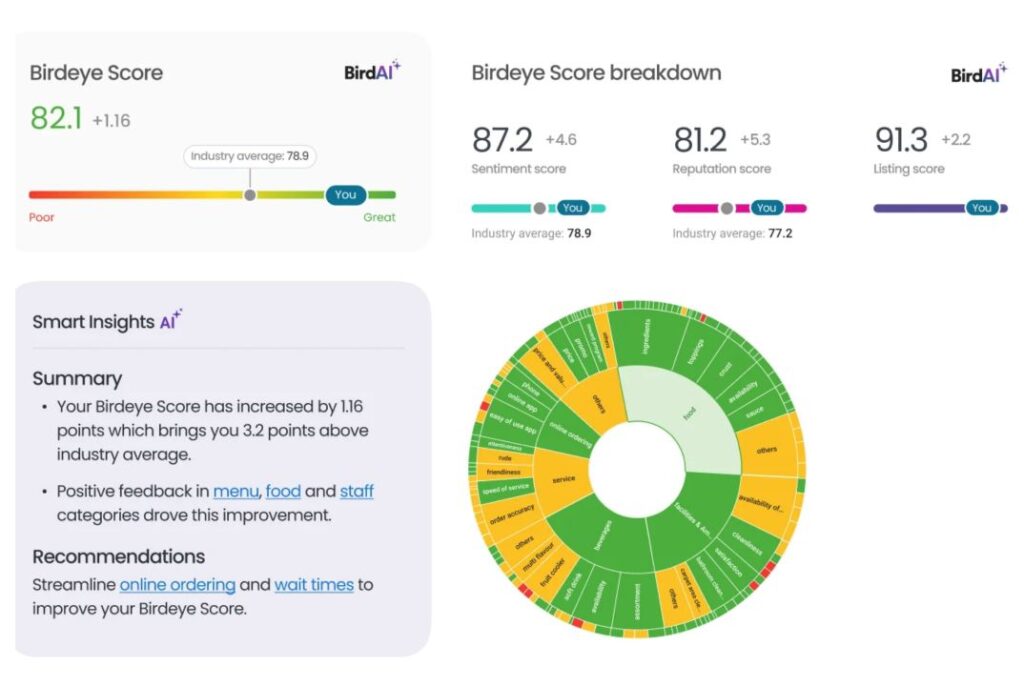
How Birdeye bridges customer success and experience
At Birdeye, we believe customer experience transformation isn’t a department; it’s a strategy for growth and retention. Our GenAI tools unify customer feedback, behavioral data, and industry benchmarks to drive better decisions at scale.
With Birdeye, your CS and CX teams can:
- Monitor online reviews and respond in real time.
- Launch multi-channel survey campaigns.
- Analyze sentiment trends to detect churn risk early.
- Get smart insights from omnichannel data.
- Benchmark experience against competitors using Birdeye Competitors AI.
- Use Birdeye Survey AI to uncover patterns across customer segments.
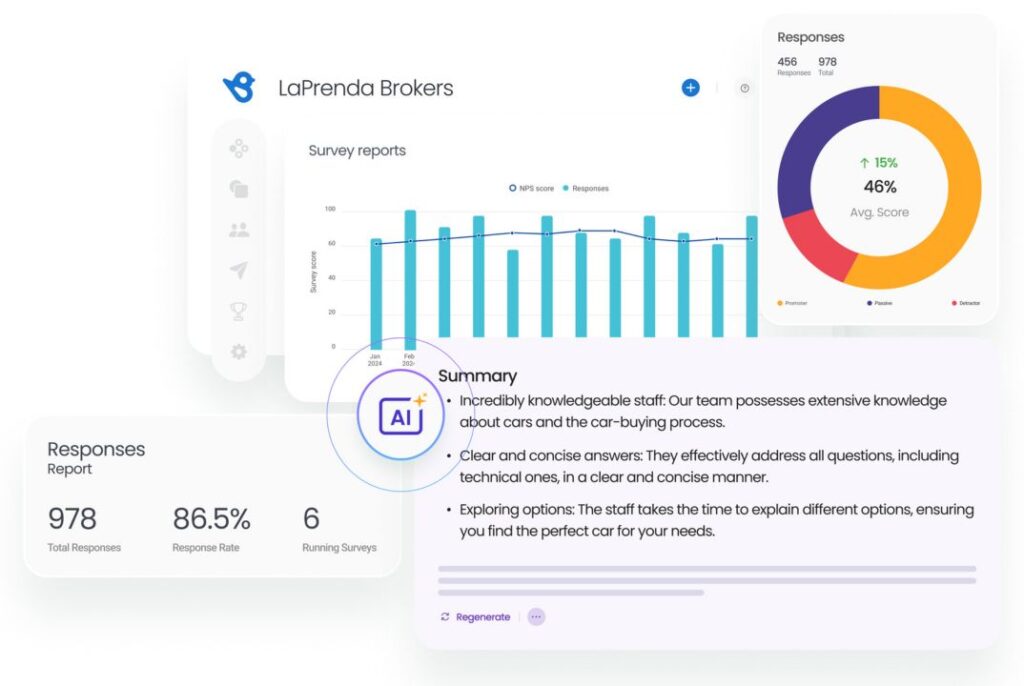
By leveraging Birdeye’s integrated solutions, Complete Care achieved remarkable results in patient acquisition, showcasing the transformative power of a unified strategy.
How Complete Care increased patient acquisition by 3653% with Birdeye

The brand
Complete Care is a trusted medical provider with 16 locations across multiple states.
The challenge
Despite offering excellent service, Complete Care struggled to generate online reviews and capture feedback that could improve customer satisfaction and organic growth.

The solution
They partnered with Birdeye to automate review collection, benchmark patient sentiment, and communicate through mass texting. As a result:
- 3,653% increase in reviews per location
- Star rating increased from 4.1 to 4.8
- Over 29,000 reviews generated
- Cost per lead and click decreased
- More locations showed up on Google’s 1st page
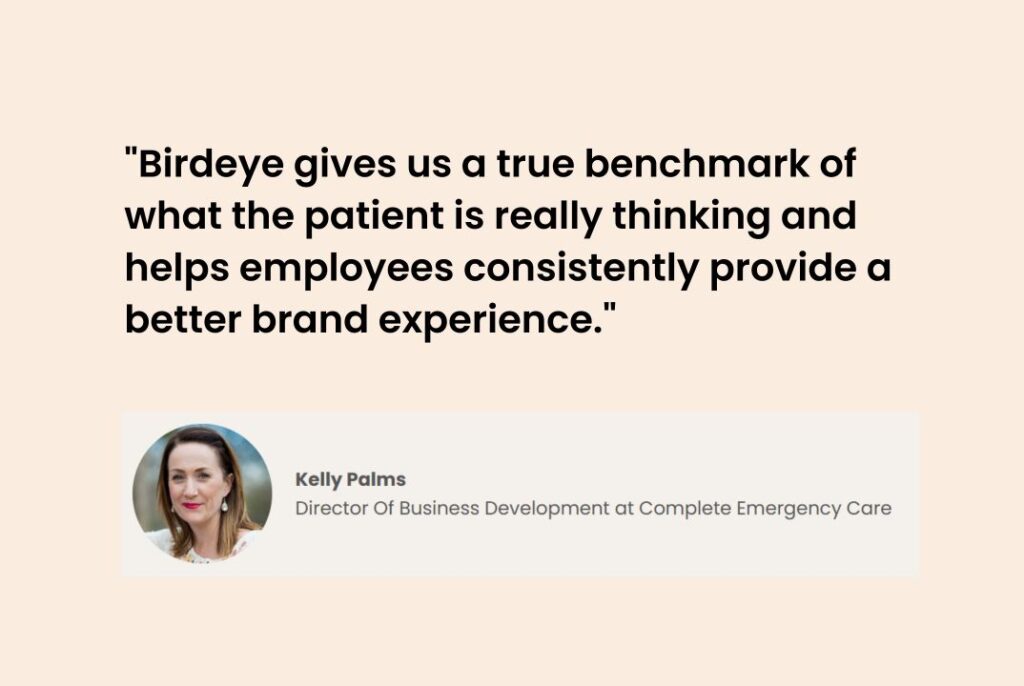
Learn more about Birdeye and Complete Care case study
How customer success and experience teams work better together
When customer success teams and customer experience teams operate in silos, the result is often conflicting priorities and missed opportunities. However, when aligned, they form a powerful feedback loop across the entire customer journey.
Let’s look at how they complement each other at each key phase:
1. Onboarding
- CS focus: Ensure a smooth onboarding process, accelerate product adoption, and guide clients to early wins.
- CX focus: Deliver a delightful first impression, reduce friction, ensure intuitive interactions.
Insight: With Birdeye Survey AI, brands can assess onboarding satisfaction in real time and adjust content, support, or steps accordingly.
2. Adoption and usage
- CS tracks: Usage patterns, feature adoption, and value realization.
- CX evaluates: Ease of use, satisfaction with UI, and support experiences.
Pro Tip: Birdeye Review AI quickly identifies potential spam or fake content, addressing early usage concerns before they result in churn.

3. Retention
- CS managers use health scores and NPS to prevent churn proactively.
- CX focuses on reducing emotional pain points and fostering positive interactions.
Note: According to Birdeye’s 2025 report, review responses went up by 15% in a year, with businesses favoring personal replies over automated ones. This shift toward personal engagement plays a direct role in enhancing customer satisfaction and, ultimately, retention.
Personalized care = higher retention.
Here’s Kelly Palms, Director of Business Development at Complete Emergency Care, highlighting the impact of Birdeye Reviews AI on their brand.
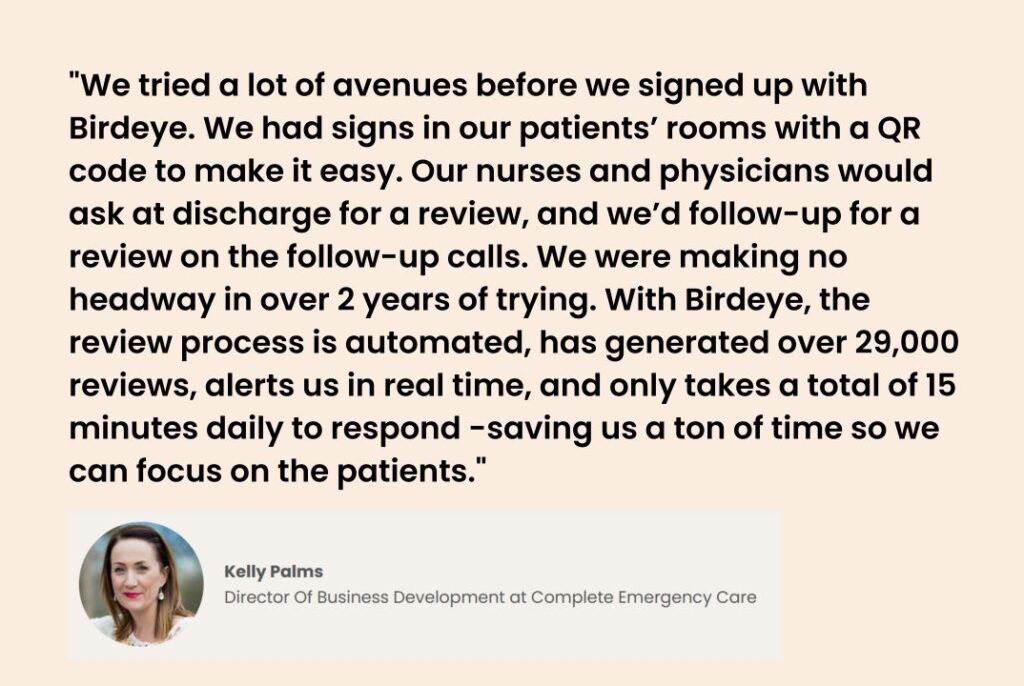
4. Expansion
- CS drives upsells and cross-sells using relationship intelligence.
- CX ensures customers feel valued and heard, not sold to.
Why value is the metric that matters most
The real measure of success lies in helping customers achieve measurable outcomes that directly contribute to long-term relationships and sustained customer loyalty.
Achieving this requires aligning both customer success (CS) and customer experience (CX) toward a common goal, which is value realization.
Here’s what that looks like:
For CS: Tracking milestones such as product adoption, the depth of customer usage, and return on investment (ROI) ensures that customers are progressing towards their goals and continuously deriving value from your product or service.
For CX: Focusing on factors like ease of use, emotional connection, and brand differentiation ensures that customers not only achieve their objectives but also feel valued and understood throughout their journey.
Ultimately, customer success and customer experience are intertwined in the pursuit of creating a positive customer experience where satisfaction is the result of both emotional resonance and tangible success.
Tip: Always ask, “Are customers achieving their goals with ease and satisfaction?” If either part is missing, whether it’s the ease of use or the measurable success, then neither CS nor CX is fully delivering. True customer outcomes are realized when both work harmoniously to meet customer needs.
How to align customer success and customer experience using data
Data is the backbone that connects customer success and customer experience. By analyzing feedback, usage, and sentiment from a single source, you enable smarter, data-driven decisions across departments.
This unified approach ensures that both teams can collaborate effectively to enhance customer outcomes and deliver a more cohesive and positive customer experience.
Use a unified view:
- Birdeye Insights AI aggregates signals from reviews, surveys, and location-level sentiment, offering businesses a clear picture of what’s working and what needs improvement. With this unified view, businesses can identify issues early and act quickly.
- Smart Insights provides actionable recommendations for each location, product, or service line, enabling businesses to refine their customer success strategies and ensure satisfied customers at every touchpoint.
Build proactive strategies:
Data empowers proactive decision-making. Here’s how:
- Onboarding friction? Identify issues early and resolve them before they escalate into support tickets.
- Drop-offs in a specific customer segment? Use Birdeye Survey AI to dig deeper into the data and uncover the root causes of disengagement.
- Declining sentiment in a region? Leverage Birdeye Competitors AI to compare your performance against peers and adjust your strategy accordingly.
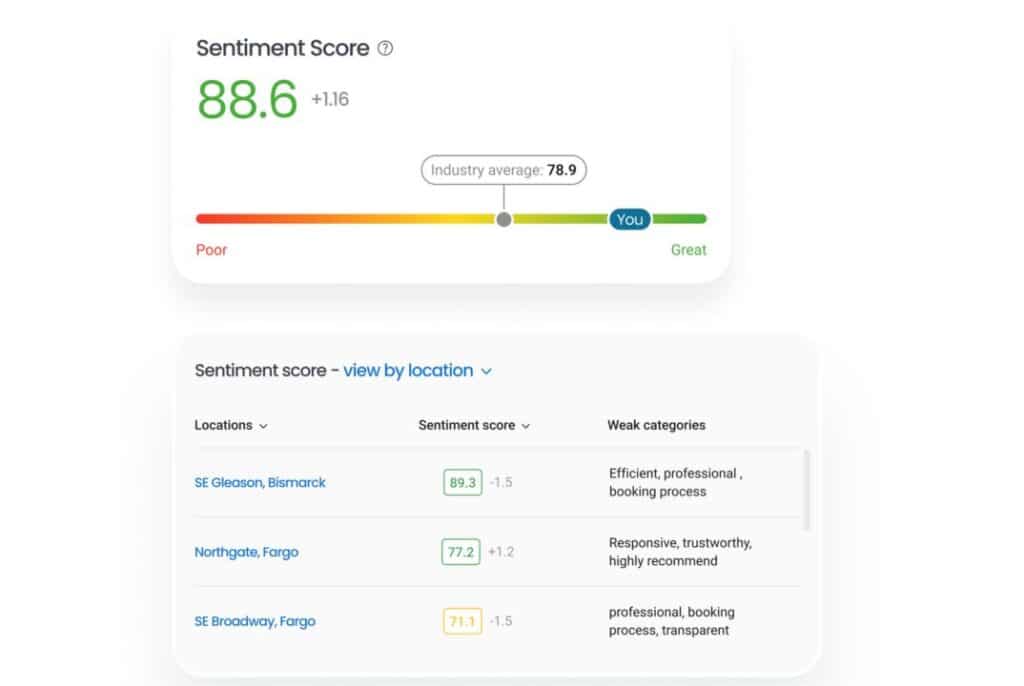
Case insight: When Complete Care used Birdeye’s unified sentiment analysis and real-time alerts, they were able to reduce patient churn, enhance customer outcomes, and improve their marketing ROI, all while spending less on paid ads. This is the benefit of integrating customer feedback and sentiment across the customer success and customer experience journey.
The future of success and experience: AI, benchmarks, and customer-centricity
With rising customer expectations and real-time engagement across multiple channels, businesses must rethink how they define and deliver customer value.
Here’s what forward-thinking brands are doing:
- Using AI to monitor customer health scores and automate outreach.
- Benchmarking customer sentiment against competitors, not just internal metrics.
- Centralizing post-purchase support with automated insights and feedback loops.
- Empowering customer success managers and CX teams to act on the same playbook.
FAQs: Customer success vs customer experience
Customer success focuses on helping customers achieve their desired outcomes, while customer experience ensures they have positive interactions throughout the entire journey. One is goal-oriented, the other emotional and journey-based.
A customer success manager (CSM) works post-sale to ensure customer enablement and retention. A customer experience manager (CXM) shapes the perception across all touchpoints, including sales, marketing, support, and product.
Customer service: Reactive issue resolution (tickets, support). CX (Customer experience): Emotional journey and perception management. CS (Customer success): Proactive enablement for measurable value.
They prioritize onboarding, value realization, customer retention, and churn prevention, often using health scores and account management strategies.
Yes, by integrating tools like Birdeye, which combines feedback, sentiment, reviews, surveys, and competitor benchmarks to inform both CS and CX strategies, you can create a customer-centric, unified operation.
Final thoughts: The difference between customer success and experience is your competitive edge
In today’s customer-centric market, the real question isn’t about choosing between customer success and customer experience; it’s about how seamlessly your business can integrate both.
- Utilize customer success strategies to drive measurable outcomes, enabling customers to achieve their goals and foster deeper engagement over time.
- Leverage customer experience metrics to refine every touchpoint along the overall customer journey, optimizing each phase to ensure maximum satisfaction.
- Use Birdeye solutions to connect both, turning every interaction into an opportunity for growth by analyzing sentiment, tracking behavior, and delivering actionable insights that help you nurture customer segments and elevate the experience at scale.
By focusing on both customer success and customer experience, businesses can ensure that clients achieve their desired outcomes while fostering loyalty that extends the customer lifetime.
Let Birdeye help you bridge these two vital functions and unlock the full potential of every customer relationship. Watch a demo now.

Originally published
![[Feature image] Customer success vs customer experience- The high-stakes difference businesses must master in 2025](https://birdeye.com/blog/wp-content/uploads/Feature-image-Customer-success-vs-customer-experience-The-high-stakes-difference-businesses-must-master-in-2025-1140x596.png)




